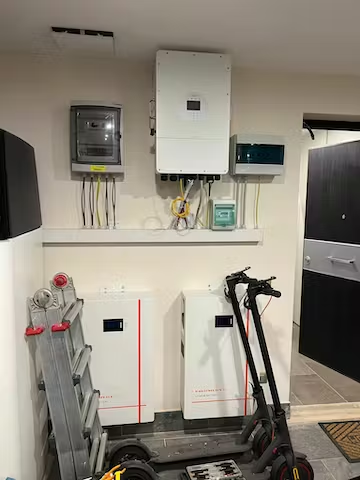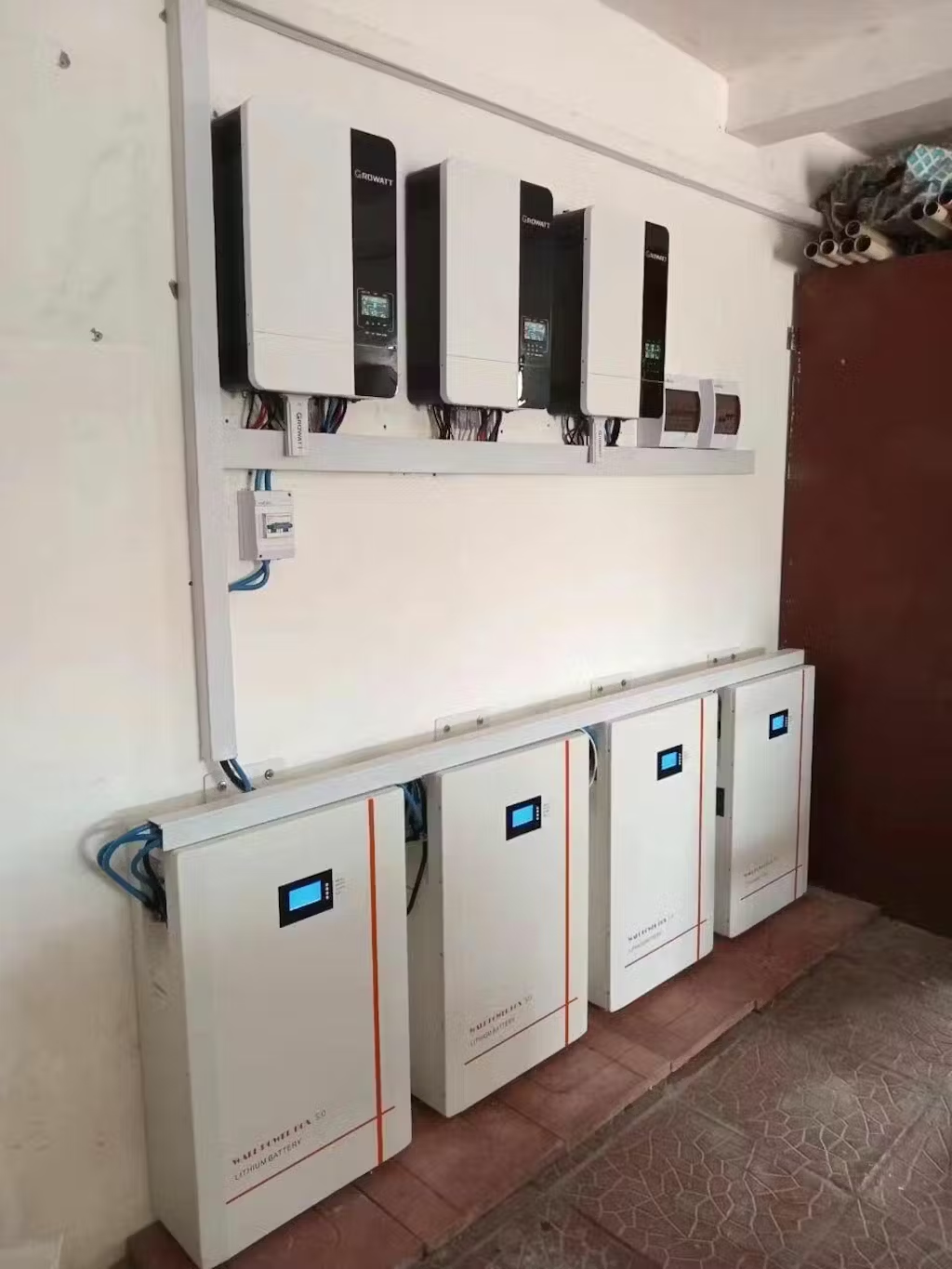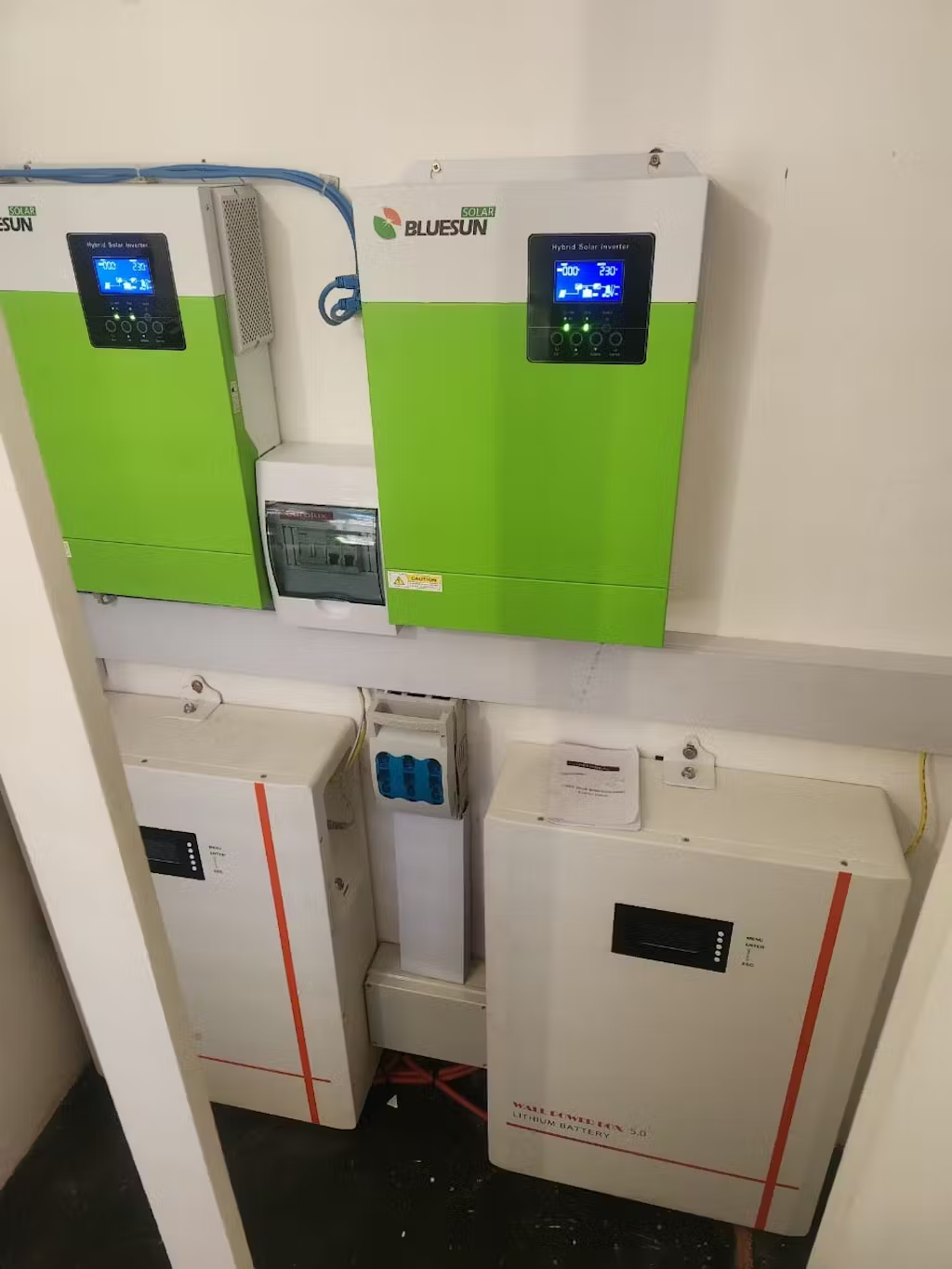Why Choose Diypow Lithium Powerwall Battery?
Diypow Powerwall batteries offer several advantages over Tesla's Powerwall batteries. Our product stands out for its superior performance, reliability, and cost-effectiveness.
With a large capacity of 10kWh, it provides ample energy storage for household applications. The home lithium battery, also known as the lifepo4 powerwall, is a high-performance battery developed to provide sustainable energy for the house. It stores the extra electricity generated by the sun during the day while keeping the home powered at night or during power outages. To save on electricity bills and for backup emergency power, this lithium battery is a good choice. Check out our other battery models.
In addition, our batteries offer seamless integration with solar power systems, maximizing energy efficiency and reducing reliance on the grid. The competitive pricing of our products makes them an attractive option for those seeking an affordable and sustainable energy storage solution. Choose Diypow for a robust, reliable, and economical energy storage solution.
Diypow 48V 200AH 10kWh LiFePO4 Solar Powerwall Battery
Diypow 48V 100AH 5.12kWH-30.72kWH Stackable Server Rack LiFePO4 Lithium Battery | 10-Year Warranty
Diypow 3KW 110V SPF3000 48V MPPT Charging OFF-Grid Solar Inverter
Diypow 48V 100AH 5kWh LiFePO4 Solar Powerwall Battery
Diypow Best Lithium Powerwall Battery
What are lithium powerwall batteries? Simply put, they store excess electricity generated by solar panels. When your solar panels are not producing energy, including at night and on cloudy days, the stored energy can power your home. They can also power your home when the grid fails.
Dipow's home energy storage battery features a sleek, patented design that fits nicely on the wall or on the floor. Multiple Powerwalls can be stacked together to increase stored energy and power more devices in your home or business. There is AC coupling which makes it easier to install into an existing solar panel system. This home energy battery is used for emergency backup. In addition, there are easy-to-use Bluetooth applications that allow you to monitor your home battery energy storage system in real-time and change the way they distribute power throughout the day.
Types of Home Energy Storage Batteries
⚡LEAD-ACID BATTERIES
⚡SODIUM-SULFUR BATTERIES
⚡LITHIUM BATTERIES
Tesla Powerwall Alternatives | Diypow Powerwall
⭐Backup Power
⭐Energy Cost Savings
⭐Long-lasting Performance
⭐Environmental Sustainability
⭐Flexible Battery Capacity
⭐Independence Power Everything
Tesla vs. Diypow Powerwall Batteries
Tesla Powerwall
Tesla has designed this AC battery system for residential and light commercial use. It uses lithium-ion batteries and runs quieter and cleaner than conventional gasoline backup generators. It has no exposed vents and no visible wires, making it a safer solution for homes with children or pets.
The following are the technical details of the Powerwall:
- Energy capacity: 13.5 kWh, can be combined with up to 10 Powerwalls
- Power: 7 kW peak/ 5 kW continuous; seamless backup transition; pure sine wave output
- Dimensions: 45.3 "L x 29.6 "W x 5.75" D
- Mounting: Floor or wall mount
- Warranty: 10 years
Benefits:
Since its launch in 2015, the Powerwall has become the best known in the solar cell sector. It features a sleek design that mounts nicely to the wall. Multiple Powerwalls can be stacked together to increase storage capacity and power more appliances throughout your home or business. In addition, the Powerwall is one of the cheapest solar cell options on the market.
Disadvantages:
Everyone is more concerned about the Tesla powerwall battery cost. The truth is that the price does seem a bit high and not everyone can afford the cost. Depending on when you order from Tesla, it may take a few months for your Powerwall to arrive. In addition, the Powerwall requires multiple electrical boxes and additional components to meet local electrical codes. These additional components take up space and limit your ability to incorporate them into a viable design solution while leaving you with fewer options for concealment.
Diypow Powerwall
Diypow is a system with an intelligent BMS and a large LCD screen. It can manage and monitor battery information including voltage, current and temperature, protecting the battery from overcharging, deep discharge, overload, overheating and short circuits, helping to extend the life of the battery. There are equipped with inverters that are fully compatible with the battery. Compared to the Telsa, the Diypow powerwall has many of the same features and an equivalent power profile.
The following are the technical details of the Diypow:
- Rated energy: 10 kWh, up to 20.48 kWh when installed with a second Diypow wall-mounted battery
- Power: Continuous power: up to 10.24 kW
- Dimensions: Energy Storage System = 16.53 "L x 27.55" H x 10.19" W, Inverter = 18.5" L x 12.59" W x 5.31" D
- Mounting: Wall Mounted & Stand Mounted
- Warranty: 10 years
Benefits:
CAN/RS485/RS232 communication protocol lithium ion battery compatible with most inverters. Comes with its own Bluetooth BMS to monitor and manage the power used by the solar panel. Supports up to 32 batteries in parallel. Diypow batteries also typically operate at lower temperatures than their competitors, which increases the likelihood that the batteries will operate at maximum capacity for longer periods of time.
Disadvantages:
In contrast, Diypow may be inferior to Tesla in terms of brand awareness.
Hot Products
Powerwall Batteries Buying Guide
If you are a home user and want to save money on your electricity bill, if you are a commercial user and want to balance the peaks and valleys of electricity, reduce your electricity costs, find a reliable emergency backup power source, or if you are in a rural or remote area without a stable grid supply, you can choose Diypow's energy storage batteries to solve your energy problems.
Let's take a look at some of the problems you may encounter in purchasing energy storage batteries.
- Are the new Powerwalls LFP?
- Do any of the systems have a bumpless transfer from grid to battery in the case of an outage?
- Could I use a powerwall in an off-grid system?
- Is Diypow Powerwall worth it?
- How do I calculate how many solar installations I need?
- What’s a kWh?
- How big is a whole house battery backup?
- How long will a 5kWh battery last?
- How big should my battery be?
- If the power goes out, do I need to turn on the battery?
- If the battery is fully charged, how long will it last?
- Should the battery be outside or inside?
- What kind of battery do I need if I don't have a grid connection?
- How many batteries do I need for a 10kW solar system?
- How many kWh can a solar battery store?
1. Are the new Powerwalls LFP?
Yes, Diypow batteries are all lithium iron phosphate(LFP) batteries made up of Grade A cells for greater safety, high energy density and a life span of up to 15 years.
2. Do any of the systems have a bumpless transfer from grid to battery in the case of an outage?
Yes, Diypow systems all have a seamless automatic transfer with no downtime.

3. Could I use a powerwall in an off-grid system?
Yep, you definitely could! If you are assembling a small house on wheels and have been looking for a solution to go with solar cells. Since Diypow lithium iron phosphate batteries are sold together with an inverter, this is a viable option.
4. Is Diypow Powerwall worth it?
Diypow powerwall total costs can be expensive upfront, but they are worth the cost due to the higher battery capacity and longer lifespan. If you have solar panels installed and want to be energy independent, the Powerwall will help you get there as the system stores any excess energy generated by the solar panels.
5. How do I calculate how many solar installations I need?
To calculate how much solar installation you need, you need to consider several factors such as your energy consumption, the efficiency of the solar panels, the available sunlight in your area.
Calculate required capacity: To calculate the required capacity of your solar installations, divide your annual energy consumption (in kWh) by the product of solar panel efficiency and available sunlight. The formula is as follows:
Required Capacity (kW) = Annual Energy Consumption (kWh) / (Solar Panel Efficiency x Available Sunlight)
6. What’s a kWh?
Kilowatt hours (kWh) are a measure in thousand-watt steps of how much energy an appliance uses in an hour. A 1,000 Watt microwave running for a maximum of one hour uses 1 kWh. So does a 100 Watt light bulb if it’s on for 10 hours.
This means that with 13.5 kWh of stored power, the Tesla Powerwall 2 could technically run your 1000 microwave for 13.5 hours. In reality, you may only use it for 30 minutes and use lights, the TV and other appliances as well.
But if you used less than 13.5 kWh of electricity daily, the Powerwall 2 could supply you with enough power for one day, if it were fully charged.
Keep in mind that although the Powerwall 2 can store enough energy to last 13.5 kWh, it outputs a maximum of 5 kW of energy at any one time. So you need to make sure you aren’t running more than 5 kW of appliances at once. If you were running 5 kW of appliances all at once and continuously, then the Powerwall would last less than three hours.
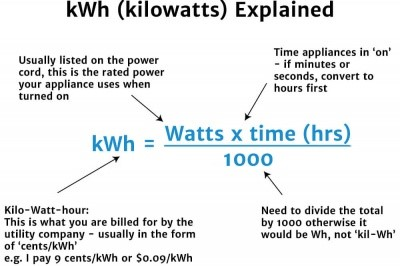
7. How big is a whole house battery backup?
The capacity of batteries is measured in kilowatt hours (kWh) and ranges from 1 kWh to over 10 kWh. Multiple batteries can be combined together to add more capacity, but 10 kWh household batteries are typical for most homes.
8. How long will a 5kWh battery last?
We have received a lot of questions asking about how long does a 5kWh battery last. Typically, a 5kWh solar battery can last approximately ten hours when you’re only running a few appliances, such as your TV, fridge, and even a few lights. However, it will drain quickly if you add the use of heavy-duty appliances, such as air conditioners.
A 5kWh battery will have 5000 watts hours, or 5 kilowatt hours, of storage energy. A fully charged battery will be able to maintain the average fridge (200W) for approximately 1 day.
9. How big should my battery be?
The first thing to do is to check if batteries are a viable solution. This means that we look at the solar panel system you have installed. We want to make sure that you are producing enough electricity to supply your house and recharge the batteries at the same time. If you're not producing a lot of electricity, we don't want to give you a huge battery if you're not exporting a lot to the grid.
10. If the power goes out, do I need to turn on the battery?
Suppose it's daytime, it's hot, and the air conditioning is on throughout the house. The power is out. If the battery can't handle the load, it will shut itself off. You then have to turn off the air conditioning and turn the battery back on. But if you are not running a heavy load, the battery will automatically switch itself off the moment the power failure occurs. In the meantime, the battery remains charged from the solar panels in the background, even though it provides power to the house. (Remember that this only works if your house is on single-phase power.)
11. If the battery is fully charged, how long will it last?
It depends on what you are running on it. If you have a few lights on, watching TV and cooking, then the battery will last 12-13 hours. However, once you add a big consumer of electricity, such as an air conditioner or dishwasher, you will drain the battery much faster. It will then last for about two to three hours. If you have a single phase power and there is a power outage, you could potentially back up the whole house - as long as you don't run more than 5 kW of continuous power.
12. Should the battery be outside or inside?
It should go in a covered area, like a garage or a shed. We like to have it close to the electricity switchboard too.
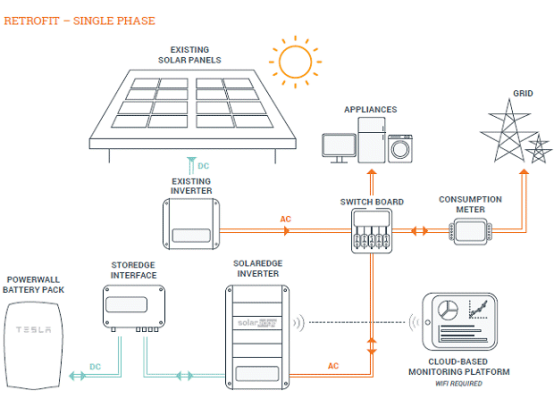
It can be mounted outside, but because the sun shining on the battery will heat it up, we need to mount it on the east or south side. It can be mounted on the floor or on the wall.
13. What kind of battery do I need if I don't have a grid connection?
Whether you use solar power and are connected to the grid, or not connected to the grid at all, you will need a backup power source for night-time use or cloudy days.
If you're connected to the grid and it's cloudy for three days in a row, you won't have enough power to power your house or charge your batteries. So you need power from the grid.
In an off-grid system, you will need a generator for those cloudy days. But you also need off-grid lithium-iron phosphate batteries.
14. How many batteries do I need for a 10kW solar system?
In summary, a 10 kW solar system typically requires a battery pack with a capacity of 20-30 kWh, which may require 100-150 battery packs with a capacity of 200 amps.
15. How many kWh can a solar battery store?
The average household uses 8-10 kWh of electricity per day. The starting capacity of domestic batteries is around 2.5 -5 kWh, with small systems up to about 13-15 kWh for larger systems.




